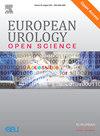男性前列腺癌患者报告的预后综述:来自PIONEER联盟的结果。
IF 3.2
3区 医学
Q1 UROLOGY & NEPHROLOGY
引用次数: 0
摘要
背景和目的:患者报告结果测量(PROMs)越来越多地被用于捕捉患者对其功能状态和生活质量(QoL)的看法。大数据可以帮助我们更好地了解患者报告的结果(PROs)。利用前瞻性收集的来自欧洲前列腺癌诊断和治疗增强大数据(PIONEER)联盟的数据,我们旨在描述主动监测(AS)、根治性前列腺切除术(RP)和放疗(RT)治疗前列腺癌(PCa)男性患者的功能状态和生活质量,并证明PROM数据在大规模和欧洲水平上的适用性。方法:我们使用欧洲癌症研究与治疗组织(EORTC) QLQ-C30、EORTC QLQ-PR25或扩展前列腺癌指数复合(EPIC)-26/50问卷收集生活质量数据,确定数据来源。每个数据源共享尿、肠和性功能障碍、整体健康状态和生活质量的汇总汇总评分。主要发现和局限性:我们确定了来自不同环境的8个数据来源:常规医院数据、嵌入式研究PRO收集、患者组织收集的调查数据、多机构前瞻性队列研究和注册数据。有709名AS患者、20508名RP患者和3417名RT患者的PRO数据,从诊断到PROM评估的中位时间为1至8.7年。大多数男性被诊断为Gleason≤7病,T1或T2 PCa。我们观察到性功能障碍是最受影响的PRO,并发现数据来源之间存在很大差异。结论和临床意义:我们的研究结果支持在欧洲使用大数据进行PRO评估的可行性。在临床实践中实施PROMs和使用标准化方法可以改善基于价值的卫生保健提供。患者总结:在这项研究中,我们结合了几个数据来源,报道了泌尿、肠道和性功能障碍、整体健康状况和生活质量。我们确定了八个数据来源,并表明性功能是治疗后受影响最大的领域。本文章由计算机程序翻译,如有差异,请以英文原文为准。
An Overview of Patient-reported Outcomes for Men with Prostate Cancer: Results from the PIONEER Consortium
Background and objective
Patient-reported outcome measures (PROMs) are increasingly being used to capture the patients’ perspective of their functional status and quality of life (QoL). Big data can help us better understand patient-reported outcomes (PROs). Using prospectively collected data from the Prostate Cancer Diagnosis and Treatment Enhancement Through the Power of Big Data in Europe (PIONEER) consortium, we aimed to describe the functional status and QoL in men with prostate cancer (PCa) treated with active surveillance (AS), radical prostatectomy (RP), and radiotherapy (RT), and to demonstrate the applicability of PROM data on a large scale and at a European level.
Methods
We identified data sources that collected QoL data using the European Organization for Research and Treatment of Cancer (EORTC) QLQ-C30, EORTC QLQ-PR25, or Expanded Prostate Cancer Index Composite (EPIC)-26/50 questionnaires. Aggregated summary scores for urinary, bowel, and sexual dysfunction, global health status, and QoL were shared for each data source.
Key findings and limitations
We identified eight data sources originating from various settings: routine hospital data, embedded research PRO collection, survey data collected by a patient organization, multi-institutional prospective cohort study, and registry data. PRO data were available for 709 men on AS, 20 508 on RP, and 3417 on RT, with a median time between diagnosis and PROM assessment ranging from 1 to 8.7 yr. Most men were diagnosed with Gleason ≤7 disease, and T1 or T2 PCa. We observed that sexual dysfunction was the most affected PRO and found large differences between data sources.
Conclusions and clinical implications
Our results support the feasibility of PRO assessment using big data in Europe. Implementation of PROMs in clinical practice and the use of standardized methods could improve value-based health care provision.
Patient summary
In this study, we combined several data sources that reported urinary, bowel, and sexual dysfunction, global health status, and quality of life. We identified eight data sources and show that sexual function is the most affected domain after treatment.
求助全文
通过发布文献求助,成功后即可免费获取论文全文。
去求助
来源期刊

European Urology Open Science
UROLOGY & NEPHROLOGY-
CiteScore
3.40
自引率
4.00%
发文量
1183
审稿时长
49 days
 求助内容:
求助内容: 应助结果提醒方式:
应助结果提醒方式:


